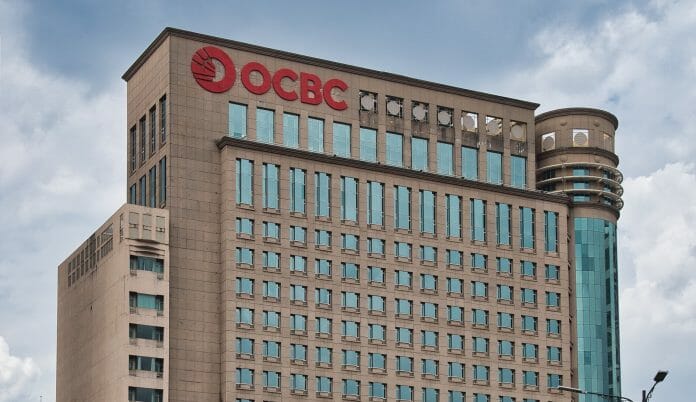Energy transition plans
The energy sector constitutes 78.5% of Malaysia’s annual greenhouse gas emissions, presenting huge potential for emissions reduction in this sector through energy transition levers such as energy efficiency, renewable energy and Carbon Capture, Usage and Storage (CCUS).
This following Malaysia publishing the first part of its National Energy Transition Roadmap (NETR) in Jul 2023, which details 10 flagship catalyst projects and initiatives based on six energy transition levers: (i) energy efficiency, (ii) renewable energy, (iii) hydrogen, (iv) bioenergy, (v) green mobility and (vi) carbon capture, utilisation and storage (CCUS).
OCBC Global Markets Research stated today (Sept 4) that the second part of the NETR was published in Aug 2023, highlighting the emissions reduction pathways, national energy mix, emissions reduction targets and the initiatives needed for the energy transition. Under the NETR’s Responsible Transition scenario, targets were listed for the six energy transition levers. For example, hydrogen targets include the phase out of 100% grey hydrogen feedstock and the set-up of 3 hydrogen hubs.
It is also targeting 3 – 6 CCUS clusters and 40 – 80 Mtpa of carbon storage capacity.
Malaysia has already kickstarted developments in areas such as carbon capture and storage (CCS), green hydrogen and renewable energy.
For example, Malaysia is collaborating with South Korea on a CCS project called the Shepherd CCS Project that aims to capture carbon in South Korea for storage in Malaysia.
Feasibility studies will soon be initiated in Sarawak which is the project site. Malaysia also plans to roll out its Hydrogen Economy roadmap by the end of 2023 on harnessing green hydrogen, with the aim to become a main export hub by 2027. The lifting of Malaysia’s export ban1 on renewable energy will also encourage local firms in building renewable power generation capacity on a larger scale, to meet the demand from neighbouring Southeast Asian countries such as Singapore and Indonesia.
Global regulatory drivers as a decarbonisation catalyst
Global policies and regulations are gearing up towards a low-carbon future, that may encourage countries like Malaysia to accelerate their decarbonisation journey. One example is the Carbon Border Adjustment Mechanism (CBAM) by the European Union (EU) as part of its Fit for 55 package to reduce greenhouse gas emissions by at least 55% by 2030 compared to 1990 levels.
The CBAM is a carbon leakage instrument that functions in tandem with the EU Emissions Trading System (EU ETS), that requires EU importers to purchase CBAM certificates equivalent to the weekly EU carbon price. Under the ETS, the European Commission currently provides free allowances to industries with high risk of carbon leakage but intends to start reducing the number of free allowances to push them to decarbonise.
The CBAM will therefore mitigate the risk of carbon leakage by equalising the price of carbon between imported and domestic products in the covered sectors.
This aims to encourage countries outside of the EU to increase climate action and ensure that emissions-intensive industries are not relocating from the EU to non-EU countries that have less ambitious climate policies.
The initial phase of the CBAM will cover emissions-intensive sectors with high risk of carbon leakage, before expanding the coverage to more sectors in the future. The existing scope of sectors covered under the CBAM includes those that are crucial to Malaysia’s economy such as iron and steel, aluminium, fertiliser and hydrogen.
It is estimated that 6.7% of Malaysia’s exports to the EU will be impacted by the CBAM’s initial phase, which can affect up to 57% of Malaysia’s exports to the EU by 2026 with an expanded CBAM coverage.
As Malaysia’s long-term trade competitiveness can be affected by such regulatory drivers, this underscores the importance of the energy transition roadmap in catalysing the decarbonisation of Malaysia’s emissions-intensive sectors.
Challenges hindering decarbonisation progress
Like many countries globally, transitioning towards a low-carbon future is challenging for Malaysia. One challenge is that Malaysia is highly dependent on coal for power generation as coal is a relatively cheaper energy source.
There needs to be an aggressive ramp up of cleaner energy sources such as renewable energy and its associated infrastructure to transition away from coal.
While Malaysia has committed to reach net-zero emissions by 2050, its existing climate policies are fragmented, and climate-related legislations are underway. Other Southeast Asian countries have already implemented climate-related legislations such as Singapore’s Carbon Pricing Act and Indonesia’s Law No. 32/2009 on Environmental Protection and Management.
Malaysia is in the midst of developing its national Climate Change Bill, and the passing of this Bill will play an important role in facilitating mandated climate action. Not to mention, the costs. NETR anticipates that Malaysia will require an investment of RM1.2 trillion – RM1.3 trillion by 2050. In this decade, 18% of funding is required primarily in renewable energy power generation and green mobility e.g. strengthening grid infrastructure and domestic electric vehicle production capacities.
What’s next?
The NETR is a good step towards setting the direction for Malaysia’s low carbon transition, and can spur further growth of technical capabilities and job creation in Malaysia’s green economy. It also bolsters the country’s energy security, as well as signals to other countries the opportunities and potential areas for collaboration such as CCS and hydrogen. To accelerate growth in sectors through the energy transition levers, there needs to be greater investments and government mandates to develop the necessary capabilities and infrastructure for energy transition projects.









